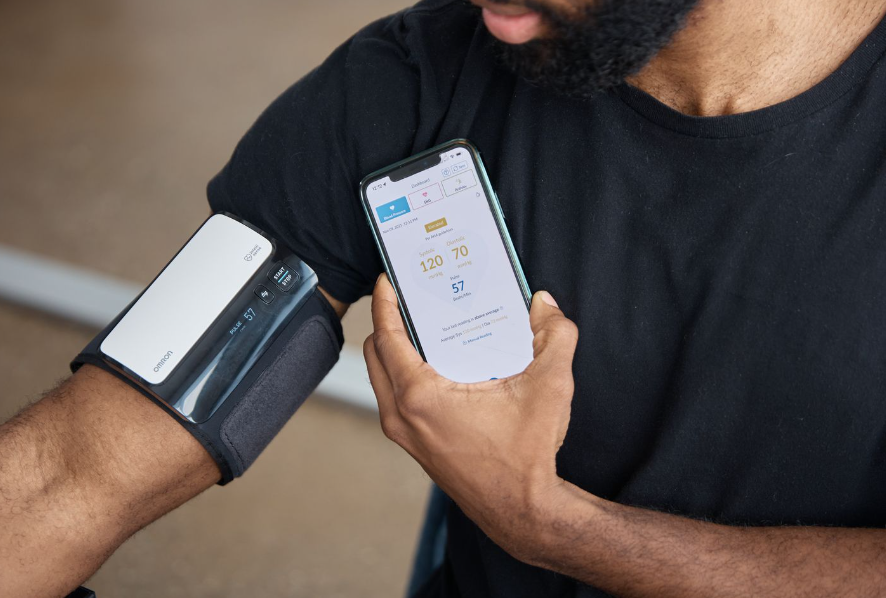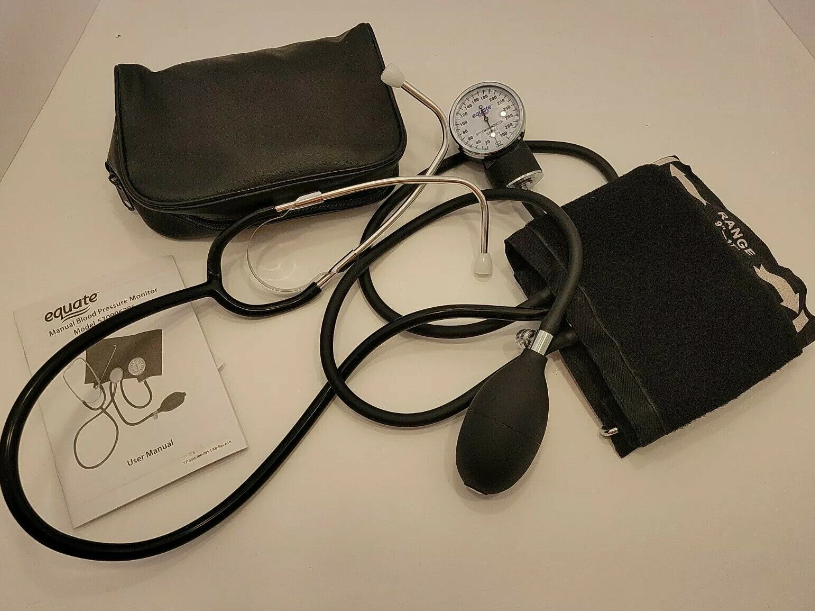Taking control of your heart health starts with understanding your blood pressure. Home monitoring empowers you to track trends, identify potential issues early, and work proactively with your healthcare provider. If you’ve chosen an Equate blood pressure monitor, you’ve made a reliable choice – but wondering how to use Equate blood pressure monitor? This comprehensive guide will walk you through every step, from setup to interpretation, ensuring you get the most out of your Equate device.
Choosing the Right Equate Monitor
Equate offers a variety of blood pressure monitors, each with its features and target user. Understanding your needs and preferences is crucial for optimal monitoring. Here’s a breakdown of popular Equate models:
Upper Arm Monitors
- Equate 4000 Series: One-touch operation, memory for 60 readings, irregular heartbeat detection. Ideal for beginners and single users.
- Equate 8000 Series: Bluetooth connectivity, voice guidance, smartphone app integration. Perfect for tech-savvy users and data-tracking enthusiasts.
Wrist Monitors
- Equate 4500 Series: Compact and portable, memory for 60 readings, LED positioning indicator. Suitable for on-the-go monitoring.
Preparing for Accurate Measurements

Before you grab your Equate monitor, ensure optimal conditions for precise readings:
- Relaxation: Avoid taking measurements within 30 minutes of smoking, eating, or exercising. Sit comfortably for 5 minutes, with your back supported and legs uncrossed.
- Proper Cuff Placement: Choose the appropriate cuff size for your arm circumference. Wrap the cuff snugly around your bare upper arm, 1 inch above the elbow crease. Align the artery marker with your pulse point.
- Posture Matters: Sit upright with your arm supported at heart level on a table. Avoid talking or moving during the measurement.
Using Equate Blood Pressure Monitor
The specific steps may vary slightly depending on your model, but the general process remains consistent:
- Power On: Press the power button to activate the monitor.
- Set User (Optional): Some models allow storing readings for multiple users. Select your profile if applicable.
- Pump the Cuff: Press the inflation button and hold until the desired pressure is reached. The monitor will automatically inflate to the appropriate level in most models.
- Measurement Begins: Relax and remain still while the monitor takes your readings. You may hear a beeping sound during this process.
- Results Display: Once complete, your systolic and diastolic pressure, along with your pulse rate, will appear on the screen. Some models may also display additional information like irregular heartbeat detection.
- Recording and Storage: Many Equate models allow storing readings in memory for later review. Consult your user manual for specific instructions on saving and accessing historical data.
Interpreting Your Equate Readings
Understanding what your blood pressure numbers mean is crucial for managing your health. Here’s a general guide:
- Normal: Systolic below 120 mmHg and diastolic below 80 mmHg.
- Prehypertension: Systolic between 120-129 mmHg or diastolic between 80-84 mmHg.
- Stage 1 Hypertension: Systolic between 130-139 mmHg or diastolic between 85-89 mmHg.
- Stage 2 Hypertension: Systolic at or above 140 mmHg or diastolic at or above 90 mmHg.
Remember: These are general guidelines, and individual blood pressure thresholds may vary based on age, underlying health conditions, and other factors. Always consult your doctor for a personalized interpretation of your readings and discuss any concerns you may have.
Advanced Features and Troubleshooting

Some Equate models offer additional features like:
- Irregular Heartbeat Detection: Alerts you to potential arrhythmias.
- Body Movement Sensor: Ensures accurate readings despite slight movements.
- Bluetooth Connectivity: Syncs your data with a smartphone app for convenient tracking and analysis.
If you encounter any issues while using your Equate monitor, consult the user manual or contact customer support for assistance.
Maintaining Your Equate Monitor
Proper care ensures your Equate monitor delivers accurate readings for years to come:
- Store it Clean and Dry: Keep the monitor and cuff away from moisture and extreme temperatures.
- Regular Battery Replacement: Ensure batteries are fresh for optimal performance.
- Cuff Maintenance: Gently wash the cuff with mild soap and water, and air dry completely.
Eating a Heart-Healthy Diet for Optimal Blood Pressure
Equate monitors provide valuable insights into your blood pressure, but optimal heart health requires a holistic approach. Diet plays a crucial role in regulating blood pressure, and incorporating heart-healthy choices into your daily routine can significantly impact your readings. Here are some key dietary tips to keep your blood pressure in check:
Embrace the DASH
The Dietary Approaches to Stop Hypertension (DASH) diet is recognized as a gold standard for managing blood pressure. It emphasizes:
- Fruits and Vegetables: Aim for at least five servings per day, focusing on a variety of colors and types for a diverse nutrient intake.
- Whole Grains: Choose whole-wheat bread, brown rice, quinoa, and oats over refined grains.
- Low-Fat Dairy: Opt for skim or low-fat milk, yogurt, and cheese to ensure adequate calcium intake without excess saturated fat.
- Lean Protein: Select lean cuts of meat, fish, poultry, or plant-based protein sources like beans and lentils.
- Healthy Fats: Include sources like olive oil, avocados, and nuts for essential fats and fiber.
Limit Sodium
Excessive sodium intake is a major culprit in high blood pressure. Aim for less than 2,300mg of sodium per day, ideally reducing it to 1,500mg if you have hypertension.
Be mindful of hidden sodium in processed foods, canned goods, and restaurant meals. Opt for fresh ingredients and cook at home to control sodium levels.
Potassium Power
Potassium counteracts the negative effects of sodium on blood pressure. Aim for 4,700mg of potassium daily by incorporating bananas, sweet potatoes, spinach, and yogurt into your diet.
Reduce Saturated and Trans Fats

These unhealthy fats contribute to elevated cholesterol levels, which can indirectly impact blood pressure. Limit saturated fats found in fatty meats, full-fat dairy, and processed foods. Eliminate trans fats by avoiding fried foods and commercially baked goods.
Mindful Eating
Beyond the content of your plate, how you eat also matters. Practice mindful eating by savoring each bite, chewing thoroughly, and avoiding distractions while dining. This promotes satiety and prevents overeating, contributing to healthy weight management, another key factor in blood pressure control.
Beyond Diet
While diet plays a crucial role, remember that a healthy lifestyle encompasses various aspects:
- Regular Exercise: Aim for at least 150 minutes of moderate-intensity exercise or 75 minutes of vigorous-intensity activity per week.
- Stress Management: Chronic stress can elevate blood pressure. Practice relaxation techniques like meditation, yoga, or deep breathing to manage stress effectively.
- Maintain a Healthy Weight: Obesity is a significant risk factor for high blood pressure. Aim for a healthy weight through a balanced diet and regular exercise.
- Limit Alcohol and Smoking: Both alcohol and smoking raise blood pressure. Moderation is key for alcohol, and quitting smoking altogether is the best approach for optimal heart health.
Remember, consistency is key. By incorporating these dietary and lifestyle changes into your daily routine, you can empower yourself to manage your blood pressure effectively and work towards a healthier, happier you. Consult your doctor or a registered dietitian for personalized guidance tailored to your specific needs and health conditions.
Conclusion
Your Equate blood pressure monitor is a powerful tool, but it’s just one piece of the puzzle. By embracing a heart-healthy lifestyle that includes a balanced diet, regular exercise, stress management, and healthy habits, you can truly unlock the potential for optimal blood pressure control and overall well-being. Remember, even small changes can make a big difference. Celebrate every step on your journey, address challenges with resilience, and enjoy the empowering feeling of taking charge of your health.
With the knowledge and guidance gleaned from this comprehensive guide, you are now equipped to navigate the world of home blood pressure monitoring with confidence. Use your Equate monitor wisely, interpret your readings accurately, and prioritize healthy choices. By making informed decisions and taking proactive steps, you can pave the way for a healthier, happier you, one beat at a time.
Resources & References
- American Heart Association: https://www.heart.org/
- National Institutes of Health: https://www.nih.gov/
- Centers for Disease Control and Prevention: https://www.cdc.gov/
- Mayo Clinic: https://www.mayoclinic.org/
- American College of Cardiology: https://www.acc.org/
FAQs – How to Use Equate Blood Pressure Monitor
Which Equate monitor is right for me?
Equate offers various models tailored to different needs. If you prioritize portability, a wrist monitor like the 4500 series might be ideal. For advanced features and data tracking, consider the Bluetooth-enabled 8000 series. For beginners and single users, the user-friendly 4000 series is a solid choice. Consult the guide for comprehensive comparisons and feature breakdowns.
How often should I take my blood pressure?
Frequency depends on your doctor’s recommendations and health conditions. Generally, once daily for stable readings or more frequently if managing hypertension is necessary. Avoid taking measurements immediately after meals, exercise, or smoking. Maintain consistency with timing and posture for accurate comparisons.
What if my readings are high or low?
Don’t panic! Isolated high or low readings may not be indicative of a problem. However, consistent discrepancies require consulting your doctor for proper interpretation and potential underlying issues. Remember, home monitoring provides valuable insights, but professional diagnosis and management remain crucial.
Can I share my Equate readings with my doctor?
Absolutely! Many Equate models allow storing readings in memory or syncing with smartphone apps. Share this data with your doctor for a clearer picture of your blood pressure trends and facilitate informed discussions about your health.
How do I troubleshoot common Equate monitor issues?
Consult your user manual for specific troubleshooting tips. Common issues include low batteries, improper cuff placement, or movement during measurement. Ensure batteries are fresh, position the cuff correctly, and remain still during readings. If problems persist, contact Equate customer support for assistance.
Where can I find additional resources on blood pressure management?
The American Heart Association, National Institutes of Health, and Centers for Disease Control and Prevention offer valuable resources on blood pressure. Consult their websites or publications for comprehensive information on healthy lifestyle practices, dietary tips, and managing hypertension.


